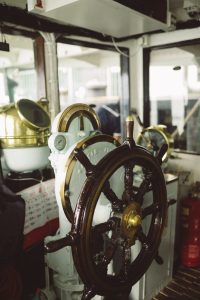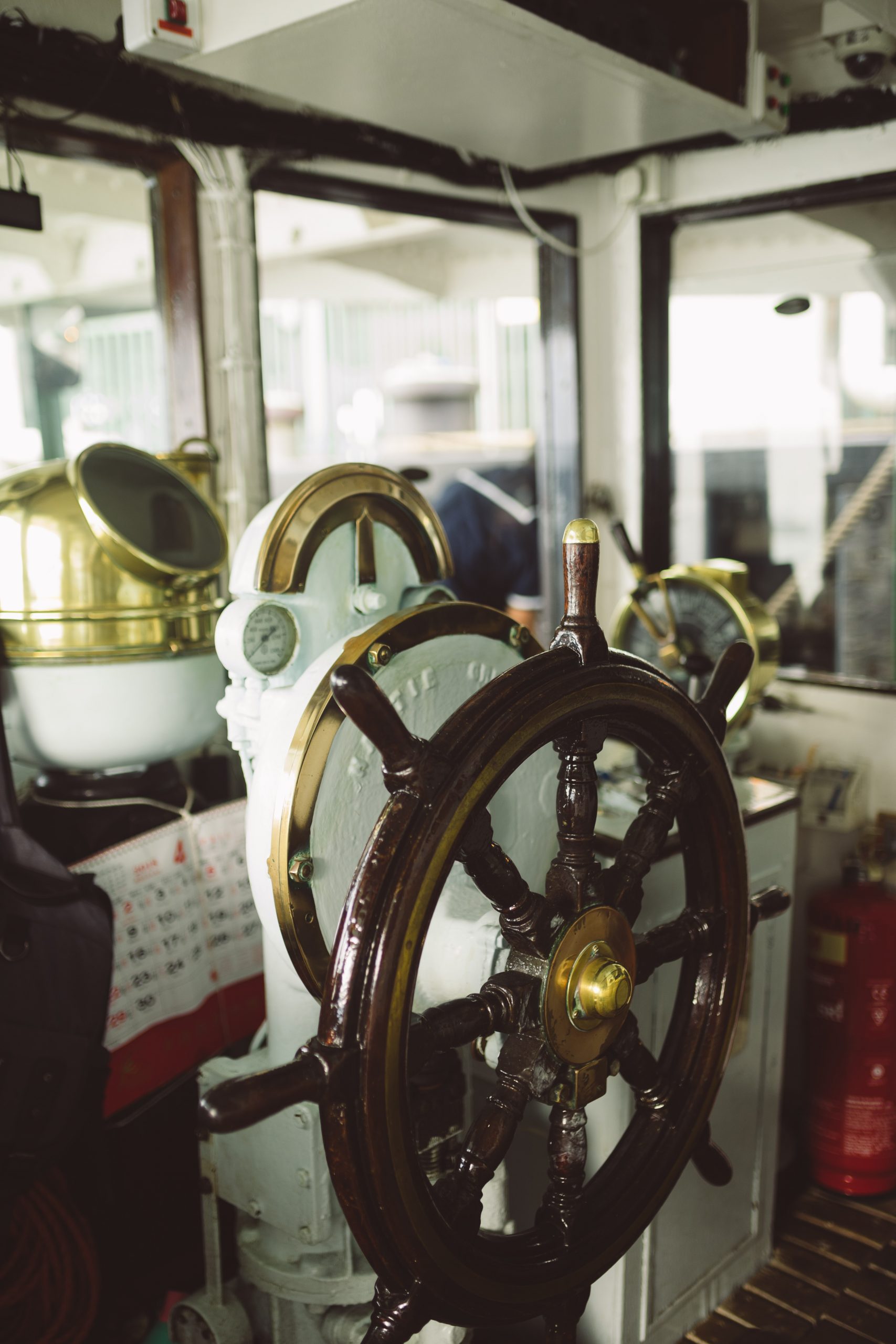 The navigation bridge of a ship is the command center from where the ship’s movement and navigation are controlled. It is located at the top of the ship and provides an unobstructed view of the surrounding area. The bridge is usually manned by a team of officers who are responsible for the safe and efficient navigation of the ship. The navigation bridge of a ship is a critical component of the ship’s navigation and safety. It is essential to have well-trained officers on the bridge who are proficient in using the navigational aids and instruments to ensure the safe and efficient passage of the ship. The navigational bridge of a commercial ship is equipped with a variety of devices and instruments that are used to navigate and operate the vessel safely and efficiently.Some of the most common devices and instruments found on the bridge include :
The navigation bridge of a ship is the command center from where the ship’s movement and navigation are controlled. It is located at the top of the ship and provides an unobstructed view of the surrounding area. The bridge is usually manned by a team of officers who are responsible for the safe and efficient navigation of the ship. The navigation bridge of a ship is a critical component of the ship’s navigation and safety. It is essential to have well-trained officers on the bridge who are proficient in using the navigational aids and instruments to ensure the safe and efficient passage of the ship. The navigational bridge of a commercial ship is equipped with a variety of devices and instruments that are used to navigate and operate the vessel safely and efficiently.Some of the most common devices and instruments found on the bridge include :
Radar: Radar is a crucial instrument used for detecting and tracking other vessels, shorelines, and navigational hazards such as rocks, shoals, and icebergs. It uses radio waves to send out signals and receive echoes to determine the distance, direction, and speed of objects in the ship’s vicinity.
GPS: Global Positioning System (GPS) is a satellite-based navigation system that provides accurate and real-time information on the ship’s position, speed, and heading. It allows the crew to plot their course and track their progress, ensuring that the ship is on course and avoiding hazards.
Electronic Chart Display and Information System (ECDIS): ECDIS is a computer-based navigation system that displays electronic charts and provides real-time information on the ship’s position, speed, and heading. It integrates with other navigation systems such as GPS and radar, to provide a comprehensive view of the ship’s surroundings.
Automatic Identification System (AIS): AIS is a system that allows ships to exchange information such as their position, course, and speed with other vessels in the area. It helps improve situational awareness and reduce the risk of collisions.
Gyrocompass: A gyrocompass is used to determine the ship’s heading by measuring the rotation of a spinning wheel. It provides accurate and stable heading information, which is essential for navigation and manoeuvring.
Depth Sounder: A depth sounder is used to measure the depth of water beneath the ship. It uses sound waves to determine the distance between the ship and the seabed, providing critical information for navigation in shallow waters.
Magnetic Compass: A magnetic compass is a traditional navigation instrument that uses the Earth’s magnetic field to determine the ship’s heading. It provides a reliable reference for navigation, especially in the event of a system failure.
Bridge Alarm System (BAS): A BAS is an alarm system that alerts the crew to potential hazards such as low visibility, high traffic, or equipment failure. It helps improve safety and situational awareness on the bridge.
Binoculars: Binoculars are used by the officers to maintain a visual lookout and detect potential hazards such as other vessels, navigational hazards, or changes in weather conditions.
These devices and instruments are essential for the safe and efficient operation of commercial ships. They are regularly maintained and updated to ensure that they are functioning correctly and providing accurate information. The crew of a ship must be trained and proficient in the use of these devices and instruments to ensure safe navigation and operation of the vessel.

